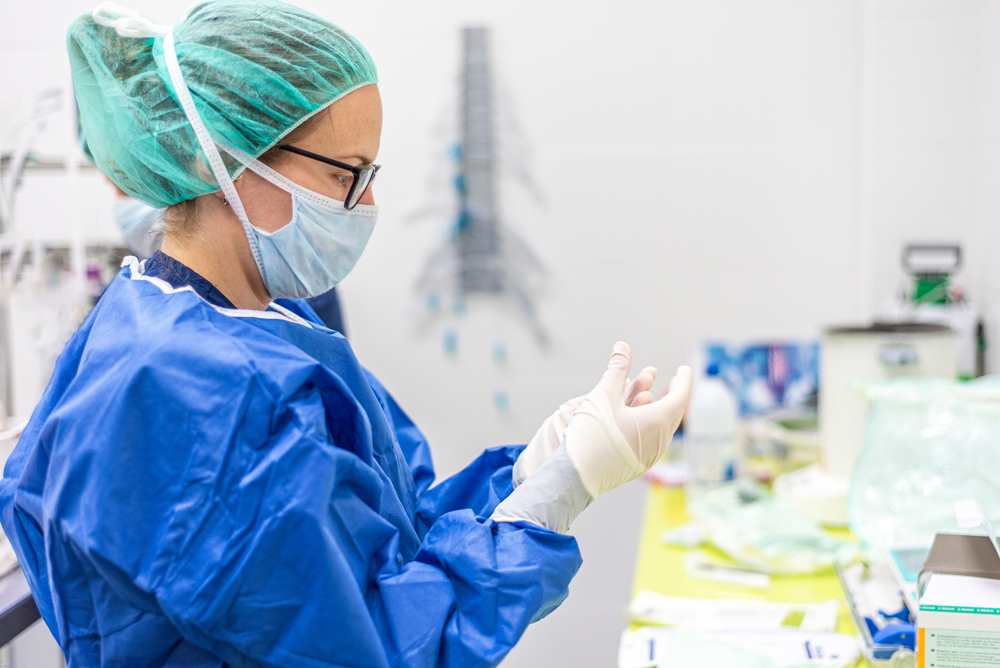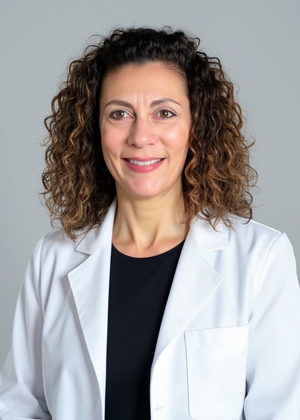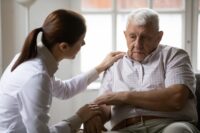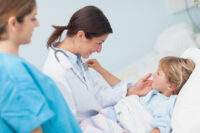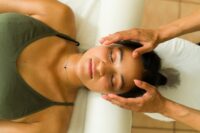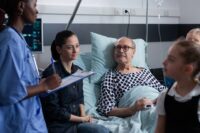On March 26, 2020, a group of major nursing organizations in the United States endorsed a policy brief to encourage academic-practice partnerships during the COVID-19 pandemic. The brief noted that these models can be both innovative and valuable at this time in history and emphasized the need for safety and alignment of student and nurse skills and competencies.
The value of an academic-practice partnership is underscored by the national need to educate a nursing workforce that, upon graduation, is ready to face the many challenges of acute care practice. The clinical preparation of new nurses must shift from a reliance on predominately theoretical to one of hands on, critical care. Imagine a hospital with six units of COVID-19 ventilated patients. This is the reality new graduate nurses are facing, every day.
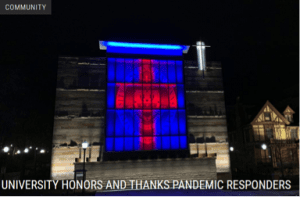

We report here on the Clinical Liaison Nurse (CLN) Academic-Practice Model we developed and implemented in a community hospital setting. Amidst the seemingly overnight critical demands facing the nursing profession resulting from COVID-19, the CLN model may serve as a template for others. The model ensures that nursing students have challenging and complex clinical experiences overseen by both expert staff nurses (CLNs) and academic faculty collaborating at the bedside to prepare new nurses for the adversity they will soon face in the hospital setting.
The journey begins
Our journey began over 10 years ago when three full-time medical surgical faculty recognized the increasing acuity of patients, the need for student nurses to develop prioritization and high level clinical judgment skills, and the real challenge for one faculty member to provide meaningful clinical experiences safely. We believed faculty were the best qualified to connect theory with practice and to evaluate students, but they needed expert staff nurses to be consistently involved in the clinical education of our students. The CLN model capitalized on both: full faculty supervision on the clinical units coupled with expert staff nurses, or CLNs, also guiding the clinical education of our students.
We sought grant funding to support site coordinators and stipends for the CLNs’ work outside their employment hours, such as participating in orientation activities, helping faculty to make assignments, and preparing post conferences. We received a grant for nursing education research from the National League for Nursing, as well as two strategic initiative grants from our own university.
Through our academic-practice partnership, we aimed to shape the clinical learning environment to make it structurally empowering so as to enhance students’ caring self-efficacy, thus having a positive impact on their professional nursing behaviors. A baccalaureate education is intended to develop clinical judgment and to enable nurses to function beyond task-focused roles, while utilizing explicit caring approaches.
Project launch
Our CLN model connected the nursing student with both expert staff (CLN) and academic faculty. It was strengthened because the staff knew and trusted the faculty members, and faculty knew which staff member enjoyed guiding and mentoring. The clinical units were welcoming and inclusive, encouraging student participation even though they were extremely busy. High acuity medical surgical units including telemetry, neurologic, and orthopedic were initially selected, as these provided a wide variety of clinical learning experiences.
The CLN title reflected the bond between the faculty and clinical nurses in providing a comprehensive learning environment for the students. The liaisons and the clinical faculty were closely aligned with unit managers who embraced the philosophy of the clinical education model. Nurse managers were essential to the success of the partnership as they recommended members of their staffs to be CLNs. Criteria for CLN eligibility included:
- bachelor’s degree
- 2 years of full-time clinical nursing experience
- a genuine interest in sharing experiences at the bedside.
CLN orientation included PowerPoint presentations and a student handbook highlighting the university’s educational goals. Academic faculty and CLNs wore lab coats with both the hospital and university logo to signify the collaborative partnership while working in unison with the students. CLNs received a grant-funded stipend for participation at the end of each semester.
Key to the model’s success were educators who instilled confidence and empowered the CLNs to teach, guide, and assist students in decision making. Jointly, the faculty and CLN sought to serve as positive role models while assisting students with decision-making and bedside care. Ultimately, these relationships aimed to provide a structurally empowering, safe, learning environment that cultivated caring self-efficacy and professional nursing behaviors.
Operationalizing the model
The triad of students, academic faculty, and CLNs has been a winning combination. Students in the CLN model benefitted greatly when clinical faculty were organized and planned ahead for student learning. Conversely, students were expected to do their part to prepare for patient care. When students were guided by faculty who had clear expectations, they felt empowered to try new ideas, have a say in how the shift was spent, and ultimately enjoyed the experience finding it both interesting and organized. For example, faculty and CLNs “preplanned” clinical experiences the evening before. This was facilitated by our university’s being within walking distance of two of the community hospitals. Students were expected to review essential chart data to be fully ready for the clinical day ahead. (see Clinical day timeline.)
Step 1: Assignments: The Day Before Clinical
- 3pm: Faculty collaborate with CLNs prioritizing the most complex patients on the unit who meet the weekly student clinical objectives.
- 4pm: Assignments are posted in the conference room providing guidance and clear objectives for the upcoming clinical day. Eight students will be assigned 2 patients (16 patients). Four CLNs will oversee these assignments (4 patients each; 2 students per CLN); see box below Step 3.
- 5pm: Students visit the clinical unit to research their assignments and complete a detailed preparation, also known as the “clinical prep.’’ The clinical prep is a comprehensive written exercise requiring students to document the major diagnosis, IV therapy and medications, assessments, lab and diagnostics, and nursing interventions.
Step 2: Patient Care: The Morning of Clinical:
- 6:30 am: Academic faculty lead pre- conference on patients the students and CLNs are jointly assigned. Faculty collect completed clinical prep sheets – students are ready to discuss and implement care focusing on the clinical judgments needed for the day (i.e. comfort, medications, teaching, assessment, implementation).
- 6:45 am: CLNs review student assignments and change/update plan (2 students per CLN).
- 7:00 am: Students meet their CLNs at the bedside for morning report.
- 7:00 am: Clinical faculty receive unit report from nurse leader
Step 3: Unfolding Clinical Day
- 8:00-1:pm Each CLN and nursing student team jointly care for the assigned patients.
- 8:00-1:pm CLNs AND academic faculty oversee student assessments, medication administration, and all nursing interventions.
- 8:00-1:pm Students witness the expert nurses prioritize, delegate, and make clinical judgments at the point of care throughout the shift.
- 8:00-1:pm Faculty actively round on patients and intervene in direct care as needed.
- 8:00-1:pm Students are included in complete management of patients throughout the shift.
- 1:00 pm A mid-shift conference is held by the academic faculty to identify any gaps in care and pinpoint remaining patient care needs.
- 1:30 pm CLNs join in mid-shift report offering guidance to complete clinical goals.
- 2:30 pm: Students sign off to their CLN at the end of the clinical shift using a report or “purple sheet” which summarizes essential care.
| Students | CLN | Patient |
| 1 | CLN 1 | 101, 102 |
| 2 | CLN 1 | 103, 104 |
| 3 | CLN 2 | 105, 106 |
| 4 | CLN 2 | 107, 208 |
| 5 | CLN3 | 109, 110 |
| 6 | CLN3 | 111, 112 |
| 7 | CLN4 | 113, 114 |
| 8 | CLN4 | 115, 116 |
Outcomes
The CLN model has benefitted students, CLNs, and faculty.
Student outcomes. The CLN model was so effective we expanded to other hospitals in our community. An Institutional Review Board (IRB)-approved open-ended data collection undertaken as a requirement for internal grant reporting in 2018 demonstrated that students in our partnership model found the clinical environment to be structurally empowering, insofar as they experienced access to opportunity, resources, information, and support. (See Comments from student narratives at end of article.) In addition to formal data collection, we have a mountain of student evidence in favor of the partnership model embedded in course surveys and faculty teaching evaluations.
CLN outcomes. We have published positive outcomes reported by nurses who participated in the partnership. The partnership model created opportunities for reciprocal learning among students, faculty, nurses, and, even, patients. It also provided opportunities for building relationships. Perhaps most important for the partnering hospitals is that nurses who participated in the model reported it reinvigorated their nursing practice.
Faculty outcomes. Clinical faculty have found the partnership to be positive both for them and for their students. Non-IRB approved data collected from faculty for the purposes of internal grant reporting revealed positive attitudes toward the partnership, especially in terms of student learning. Faculty did acknowledge some of the logistical challenges that sometimes occurred, especially around communication, making clinical assignments, accessing electronic health data, and conference space. Most reported appreciation for the additional oversight of students in the high acuity healthcare arena, noting less stress, increased patient safety, and a feeling of greater relationship building among the staff.
Partnership strategies related to COVID 19
Our model has enabled us to support our clinical partners coping with the COVID-19 pandemic in the following ways:
- Upon learning about the shortage of personal protective equipment (PPE) within our partner healthcare facilities, our dean initiated a collection and donation of all PPE supplies from our student practical laboratories.
- Our nurse anesthetist laboratories offered our three ventilators if needed.
- The university, in conjunction with our alumni society, has illuminated a beautiful red cross on the entranceway to the university to demonstrate our gratitude to all healthcare alumni and local professionals.
- Our university’s nursing department produced a video of support and thanks from current students and faculty that was uploaded to the department website with an accompanying letter of thanks. Many new CLNs are graduates of our nursing program.
- Our department has allowed for collaboration in our simulation lab and will continue to support this endeavor especially in this time of a great need for new nurses.
An ongoing commitment
Perhaps the most important advice we can offer is the necessity for formal documentation of the collaborative agreement between the academic and practice partners at the highest level of both organizations. This agreement can then be revisited as either partner’s needs change. Such formalization of the partnership ensures sustainability in the face of leadership changes at either organization. It is also necessary for both the academic and practice partner to have a point person who is empowered to help coordinate the day-to-day activities of the partnership.
When the pandemic began, our formal partnership was on hiatus, owing to leadership changes at two of the hospitals and in our own department. We were also in the process of identifying new funding streams. Most notable, however, is that many CLNs and clinical faculty were continuing to implement the model on their own, albeit informally.
Our academic-practice partnership has allowed for relationship building and a genuine connection of professional entities in our community. It also sparked a program of research on clinical education. We have all gained from the relationships, in many unforeseeable ways. As we continue to navigate this pandemic, we are committed to reinventing our partnership to meet the needs of nursing education for the upcoming years.
All authors work at the University of Scranton in Scranton, Pennsylvania. Mary Jane K. DiMattio is professor of nursing and director for the office of educational assessment, Sharon S. Hudacek is professor of nursing, and Catherine P. Lovecchio is associate professor of nursing.
References
DiMattio MJK, Lovecchio CP, Hudacek SS. Project TRIumph: A liaison nurse model to transform the clinical learning environment. Paper presented at the NLN Education Summit, Las Vegas, Nevada. 2015.
Hudacek SS, DiMattio MJ, Turkel MC. From academic practice partnership to professional nursing practice model. J Contin Educ Nurs. 2017;48(3):104-112.
Livsey KR. Structural empowerment and professional nursing practice behaviors of
Baccalaureate nursing students in clinical learning environments. Int J Nurs Educ Scholarsh. 2009;6(1):1-16.
Lovecchio CP, DiMattio MJK, Hudacek SS. Clinical liaison nurse model in a community hospital: A unique academic-practice partnership that strengthens clinical education. J Nurs Educ. 2012;51(11):609-15.
Manojlovich M. The effect of nursing leadership on hospital nurses’ professional practice behaviors. JONA. 2005;35(7/8):366-74.
National League for Nursing. U.S. nursing supports practice/academic partnerships during COVID-19 crisis. 2020. nln.org/newsroom/news-releases/news-release/2020/03/26/u.s.-nursing-supports-practice-academic-partnerships-during-covid-19-crisis
Simmons PR, Cavanaugh SH. Relationships among student and graduate caring ability and professional school climate. J Prof Nurs. 2000;16:76-82.
Western Health Sciences. Heather K. Laschinger research measurement tools. n.d. uwo.ca/fhs/hkl/
Comments from student narratives
Access to opportunity: opportunity to increase knowledge and skills
- They gave me opportunities to practice my critical thinking skills in emergency situations (4th year student).
- Often, they allow us to assist with their assigned patients giving us a lot more exposure…. without CLNs, my nurse would sometimes do treatments or pass meds without me, whereas the CLNs expose us to as much as possible (4th year student).
- Having CLNs on the floor not only allowed us to have a lot more opportunity with meds, but also has given me the chance to see wound care and do dressing changes and see things on other patients that I might not have gotten the opportunity to see otherwise (4th year student).
- The also provided me opportunities to learn that I normally would not have if the CLN program did not exist…If there is a patient with a unique diagnosis or skill that needs to be done on a patient that none of the students have, they take us into that patients [sic] room to show us or perform that skill (4th year student).
- …students are able to provide care alongside them, guaranteeing we would get the most out of every clinical day…. None of us missed an opportunity to pass meds or perform a skill under their or our professor’s supervision (4th year student).
- …she would provide us with a lot of learning opportunities that some nurses that aren’t associated with the U might just neglect to inform us on (3rd year student).
Access to resources: ability to acquire the financial means, materials, time, and supplies required to do the work
- …there was one professor for eight students. Having the CLNs allowed us to be able to pass medications every day, pass them on time, and ask and answer any questions about those meds (4th year student).
- It is nice to have more than one teacher at the site. By having the CLN nearby, I was able to get all my care done on time and didn’t have to wait for my instructor to me available to give medications with me, so the patient remained on the proper schedule (4th year student).
- … she would find resources and such for us to help study and teach us new things about certain psych meds and such. She was a huge asset to our learning (3rd year student).
Access to information: the technical knowledge and expertise required to do the job and understanding of organizational policies and decisions
- CLNs assisted me in understanding pathophysiology, pre-operative and post-operative care, physical assessments, and medication management (4th year student).
- CLNs go out of their way to show us new things and teach us new skills (4th year student).
- …the CLN did add the “why” to the work. Not only would they show me how to do the skill but they provided the rationale behind it and what may be going on systematically with the patient
( 3rd year student).
- These nurses work on the floor every day so they are very familiar with these medications, understand their mechanism of actions and side effects, and know exactly what to look for in a patient that is taking them, and they were great with sharing that knowledge with the students (4th year student).
- Being with a nurse who is assigned to that floor…. let me see different ways of prioritizing care and seeing the way that they organize themselves each day in their routine (4th year student).
Access to support: feedback and guidance from peers and superiors.
- Registered Nurses that participated in the CLN program were more included to provide me with feedback and opportunities to improve my clinical skills (4th year student).
- It was evidence that nurses who chose to be a part of the CLN program had an interest in helping and teaching students ( 4th year student).
- Overall extremely helpful and made a huge difference in calming my nerves (3rd year student).
- They [CLNs] actually teach us and let us do things…the other RNs ignore/don’t teach (3rd year student).
- She greatly impacted my clinical learning and went out of her way to make us comfortable on the unit (3rd year student).
Source: Western Health Sciences.

